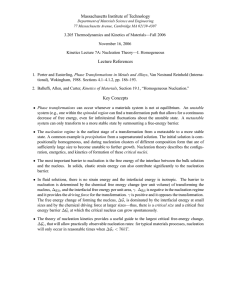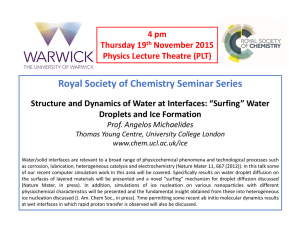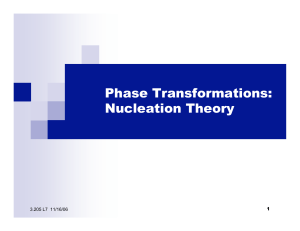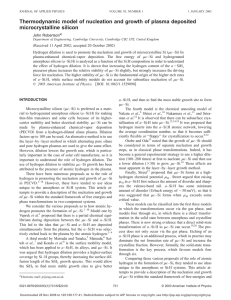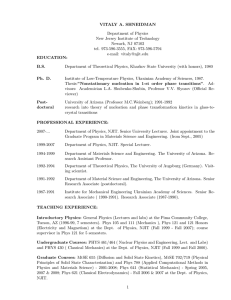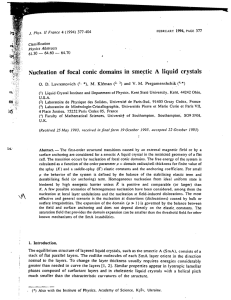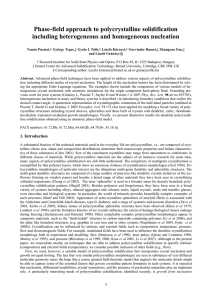Searching for order Nucleation along a line
advertisement
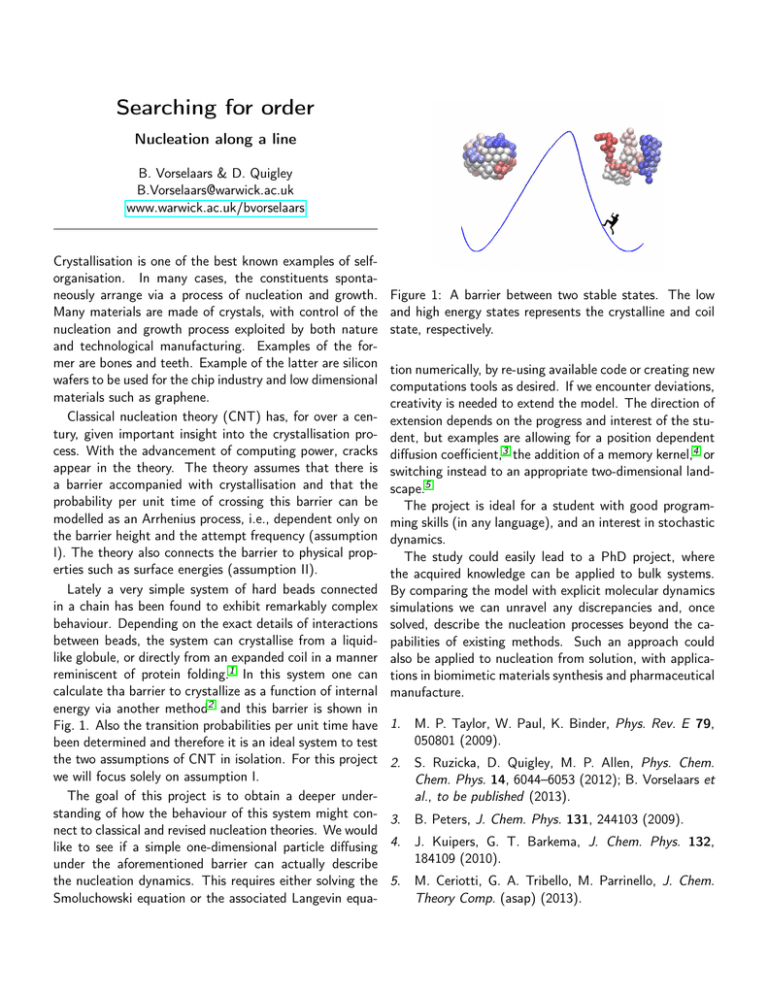
Searching for order Nucleation along a line B. Vorselaars & D. Quigley B.Vorselaars@warwick.ac.uk www.warwick.ac.uk/bvorselaars Crystallisation is one of the best known examples of selforganisation. In many cases, the constituents spontaneously arrange via a process of nucleation and growth. Many materials are made of crystals, with control of the nucleation and growth process exploited by both nature and technological manufacturing. Examples of the former are bones and teeth. Example of the latter are silicon wafers to be used for the chip industry and low dimensional materials such as graphene. Classical nucleation theory (CNT) has, for over a century, given important insight into the crystallisation process. With the advancement of computing power, cracks appear in the theory. The theory assumes that there is a barrier accompanied with crystallisation and that the probability per unit time of crossing this barrier can be modelled as an Arrhenius process, i.e., dependent only on the barrier height and the attempt frequency (assumption I). The theory also connects the barrier to physical properties such as surface energies (assumption II). Lately a very simple system of hard beads connected in a chain has been found to exhibit remarkably complex behaviour. Depending on the exact details of interactions between beads, the system can crystallise from a liquidlike globule, or directly from an expanded coil in a manner reminiscent of protein folding.1 In this system one can calculate tha barrier to crystallize as a function of internal energy via another method2 and this barrier is shown in Fig. 1. Also the transition probabilities per unit time have been determined and therefore it is an ideal system to test the two assumptions of CNT in isolation. For this project we will focus solely on assumption I. The goal of this project is to obtain a deeper understanding of how the behaviour of this system might connect to classical and revised nucleation theories. We would like to see if a simple one-dimensional particle diffusing under the aforementioned barrier can actually describe the nucleation dynamics. This requires either solving the Smoluchowski equation or the associated Langevin equa- Figure 1: A barrier between two stable states. The low and high energy states represents the crystalline and coil state, respectively. tion numerically, by re-using available code or creating new computations tools as desired. If we encounter deviations, creativity is needed to extend the model. The direction of extension depends on the progress and interest of the student, but examples are allowing for a position dependent diffusion coefficient,3 the addition of a memory kernel,4 or switching instead to an appropriate two-dimensional landscape.5 The project is ideal for a student with good programming skills (in any language), and an interest in stochastic dynamics. The study could easily lead to a PhD project, where the acquired knowledge can be applied to bulk systems. By comparing the model with explicit molecular dynamics simulations we can unravel any discrepancies and, once solved, describe the nucleation processes beyond the capabilities of existing methods. Such an approach could also be applied to nucleation from solution, with applications in biomimetic materials synthesis and pharmaceutical manufacture. 1. M. P. Taylor, W. Paul, K. Binder, Phys. Rev. E 79, 050801 (2009). 2. S. Ruzicka, D. Quigley, M. P. Allen, Phys. Chem. Chem. Phys. 14, 6044–6053 (2012); B. Vorselaars et al., to be published (2013). 3. B. Peters, J. Chem. Phys. 131, 244103 (2009). 4. J. Kuipers, G. T. Barkema, J. Chem. Phys. 132, 184109 (2010). 5. M. Ceriotti, G. A. Tribello, M. Parrinello, J. Chem. Theory Comp. (asap) (2013).


